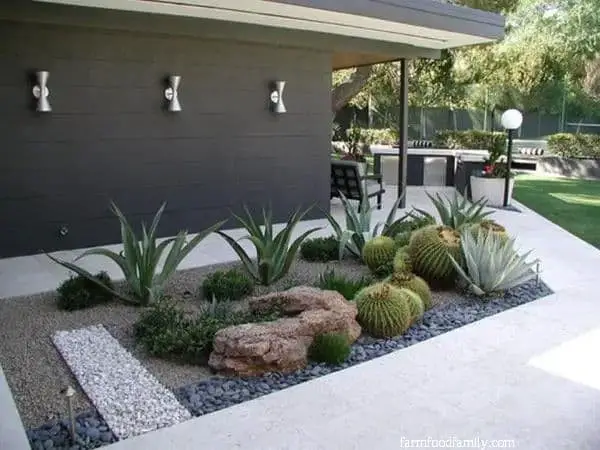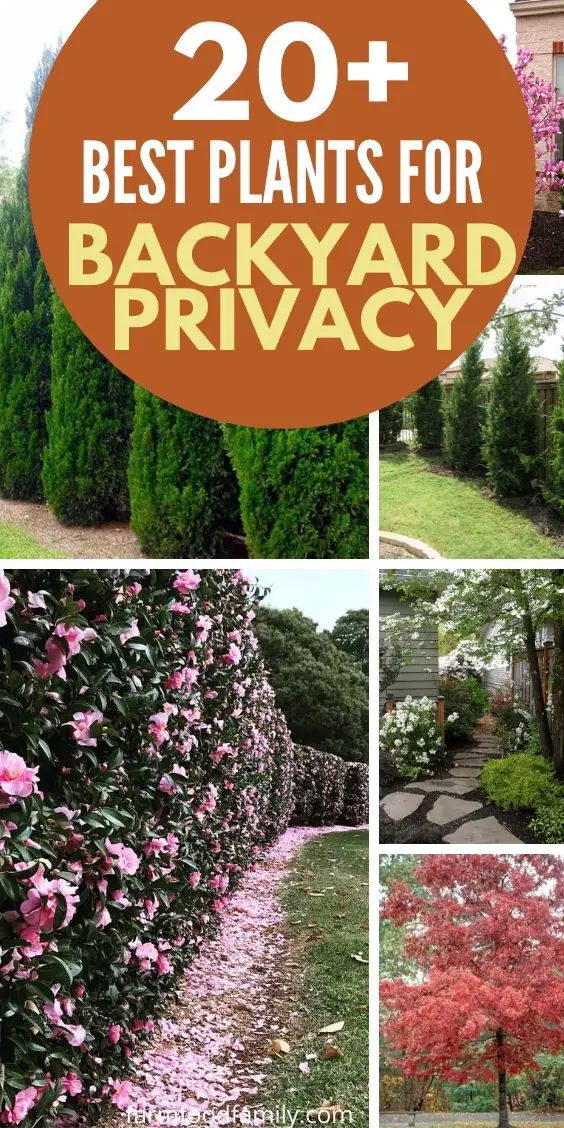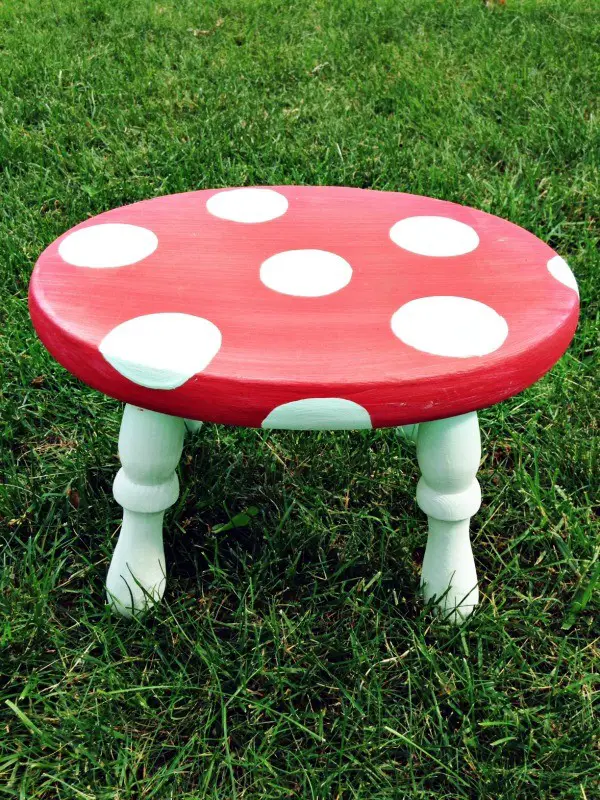Names Of 15 Common Houseplants With Pictures
House plants are a diverse and extensive group, encompassing hundreds of varieties. While many assume they’re few in number, the reality is that there’s a vast array of options to choose from. The most popular types will be discussed below, categorized into flowering and non-flowering plants. Before exploring each plant, consider your personal preferences: do you prefer plants with vibrant flowers or those boasting lush foliage?
Take time to browse through pictures and descriptions for each plant to find the perfect fit. For further insight, consult house plant statistics. The most popular house plants include Amaryllis Flowers, Aloe Vera Plants, African Violets, CACTUS, Coleus, Forced Bulbs plants, Begonia, Bonsai, Geraniums, Poinsettia, Rubber Plants, Spider Plant, and Philodendrons.
Amaryllis Flowers
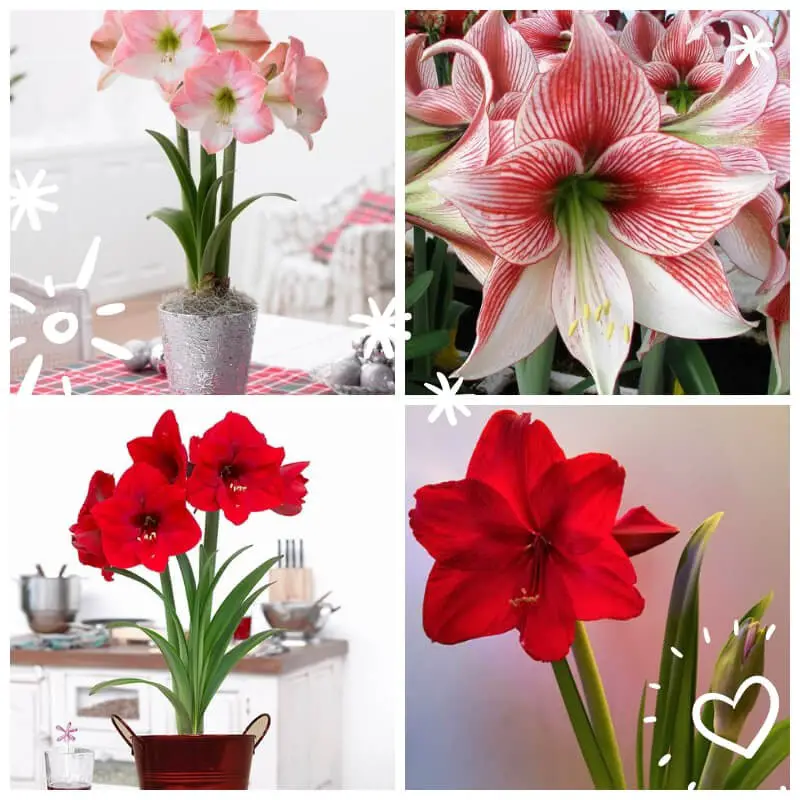
Amaryllis flowers are a unique and captivating addition to any garden or indoor space. Their exotic appearance and ease of growth make them a popular choice among plant enthusiasts. One of the most appealing aspects of amaryllis is their ability to be forced into bloom, making it possible to enjoy these vibrant flowers year-round. By simply adding water to potted bulbs, you can coax an amaryllis to bloom in as little as six weeks.
The resulting blooms are large, trumpet-shaped, and bursting with color, making them a guaranteed mood-booster for any room. As the plants grow, they can reach up to two feet tall, providing a stunning focal point for any indoor or outdoor space. Amaryllis also have the unique ability to go dormant naturally, often re-blooming during the winter months. This natural cycle makes them a popular choice during the holiday season.
The name ‘Amaryllis’ itself is derived from the Greek word for ‘sparkling’, which aptly describes the way these flowers can brighten up even the most mundane space. While they are typically grown indoors, amaryllis can also thrive outdoors in frost-free areas. To grow amaryllis successfully, plant bulbs with the upper third above ground in rich potting soil, and ensure good drainage through holes in the bottom of the growing container.
Amaryllis require minimal soil and growing space, making them an ideal choice for indoor cultivation. In order to encourage natural re-blooming, it’s essential to cut off flower stalks after blooming ceases, allowing the foliage to continue growing as long as possible. With proper care and attention, amaryllis can be coaxed into repeated blooming cycles, resulting in larger plants and more spectacular flowers.
Aloe Vera Plants
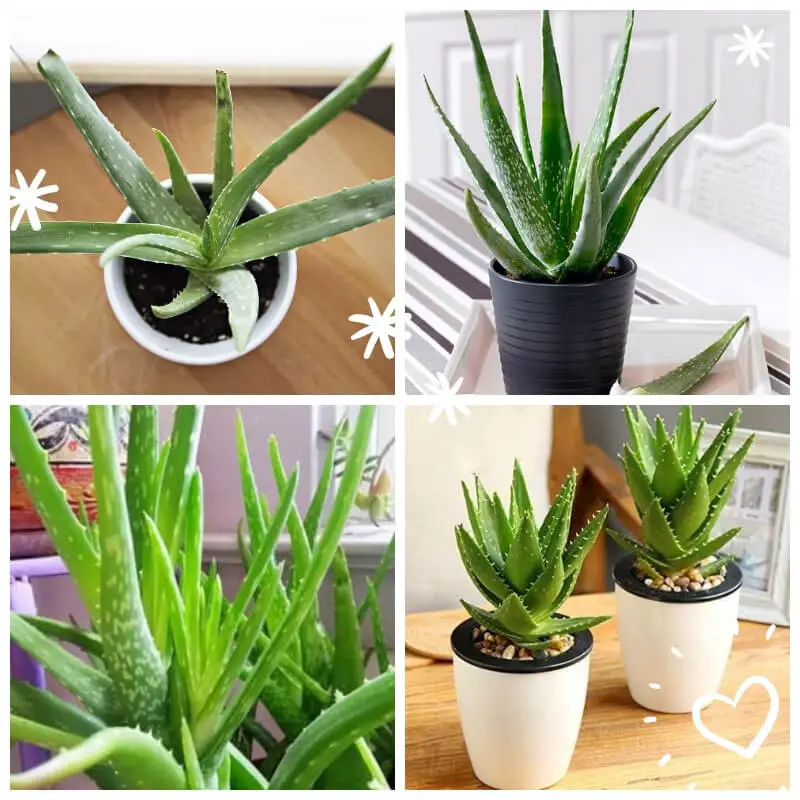
Aloe Vera plants, also known as medicinal Aloe, are succulent plants that originated from North Africa. They thrive in arid climates and are widely cultivated in Africa and other dry regions. These versatile plants have been used for centuries to treat various ailments, including burns, poison ivy rashes, itchy skin, dry cracking skin, and even moisturize the skin. Despite their medicinal value, Aloe Vera plants are often grown indoors as houseplants due to their ease of growth.
However, they can be challenging to grow tall and require careful pruning to maintain their shape. The thick, heavy leaves contain sap that can be used in teas and beverages, but some species are considered poisonous and should only be consumed under the guidance of experts. When growing Aloe Vera plants indoors, it’s essential to select a container with good drainage, as they prefer full sun but can tolerate light shade.
Water thoroughly, but avoid overwatering, and use fertilizer spikes or liquid fertilizer for optimal growth. One must also be mindful of the plant’s tendency to become top-heavy, which can lead to falling if not properly supported. Despite these challenges, Aloe Vera plants are relatively resistant to most insect pests, although mealy bugs, scale insects, and aphids can cause decline in plant health by stunting its growth.
African Violets
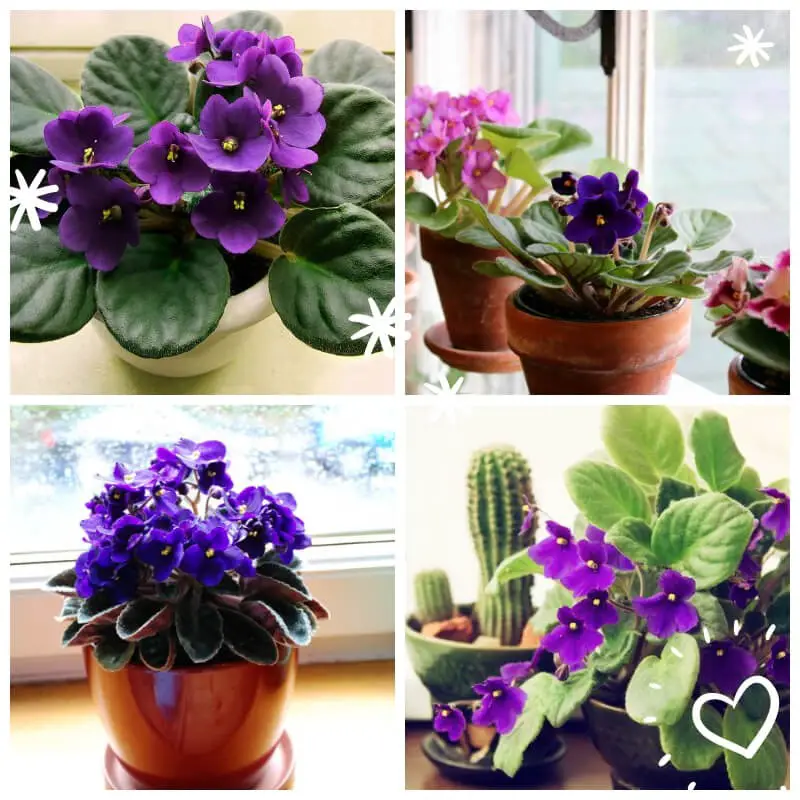
African violets are a popular choice for indoor gardening due to their ease of growth and beautiful blooms. These plants thrive in bright, indirect sunlight, but it’s essential to avoid direct hot rays during the summer months. If natural light is scarce, artificial lighting can be used as an alternative. For optimal planting, choose a pot with good drainage holes in the bottom to prevent waterlogged soil.
You can find specialized soil mix and fertilizer for African violets, which should be applied with a focus on phosphorous-based fertilizers to encourage blooming. Avoid high-nitrogen formulas if you want to promote flower growth. When watering, it’s crucial to avoid getting the leaves wet, as this can cause spotting and dead spots on the flowers. Instead, water through the soil every three days or so, using warm water for best results.
The ideal temperatures for African violets are 76°F during the day and 65-75°F at night. To keep your plants thriving, it’s essential to keep them indoors near a window where they can receive the sunlight they love. Re-potting every six months or so is also necessary to provide new nutrients, remove built-up fertilizer salts, and encourage the growth of new roots. I personally re-pot mine twice a year without issue, as this helps maintain optimal plant health.
CACTUS
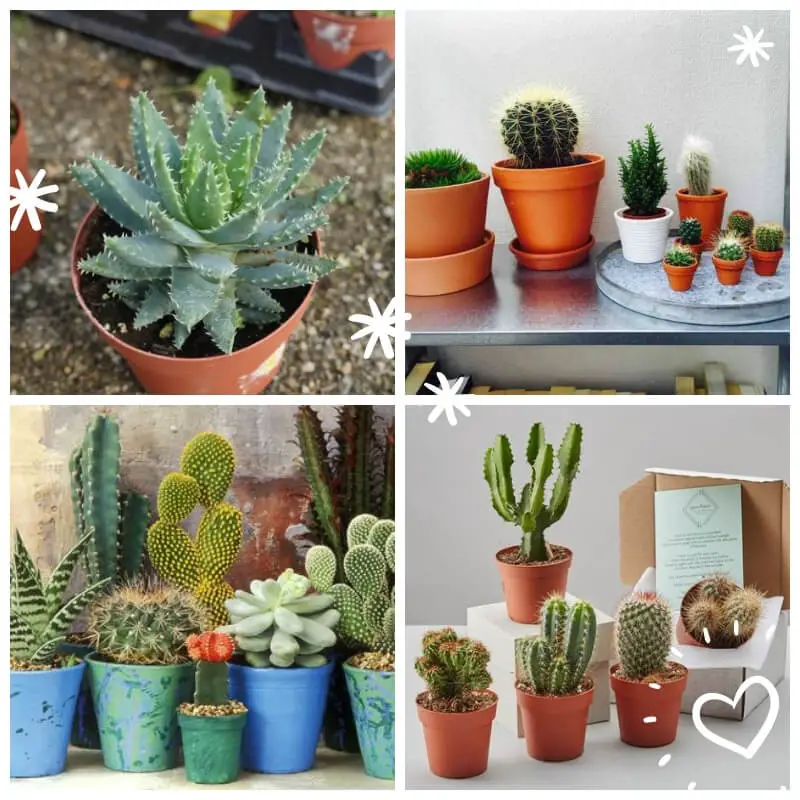
The humble cactus is an exemplary choice for those looking for low-maintenance houseplants. With their diverse shapes, colors, and forms, it’s no wonder they’re a popular choice among plant enthusiasts. One of the most striking aspects of cacti is their unique ability to store water in their stems, leaves, or roots, allowing them to thrive in dry conditions. In fact, some species can survive for extended periods without watering.
This remarkable adaptation sets cacti apart from other plants, making them a fascinating addition to any indoor space. As part of the succulent family, cacti are characterized by their distinctive spines, which not only provide defense but also serve as an identifying feature for different species. With over 2,000 species to choose from, there’s sure to be a type that suits your taste and preferences. Some species can even grow quite tall, reaching heights of up to 10 feet or more.
In addition to their aesthetic appeal, cacti have several practical uses. Their edible stems can be prepared for cooking, while the spines themselves can be used as toothpicks, combs, or even sewing needles. They’re also a popular choice for filling pillows and beds, and can even be used as building materials or living fences. When it comes to growing cacti, it’s essential to start with a healthy plant.
Avoid any that show signs of damage, bruising, or uneven growth, and instead opt for one that’s been nurtured in a greenhouse environment. Alternatively, you can try your hand at growing cacti from seed, although be prepared for a potentially long germination period. With proper care and attention, however, your young plants will flourish, providing years of enjoyment.
Coleus
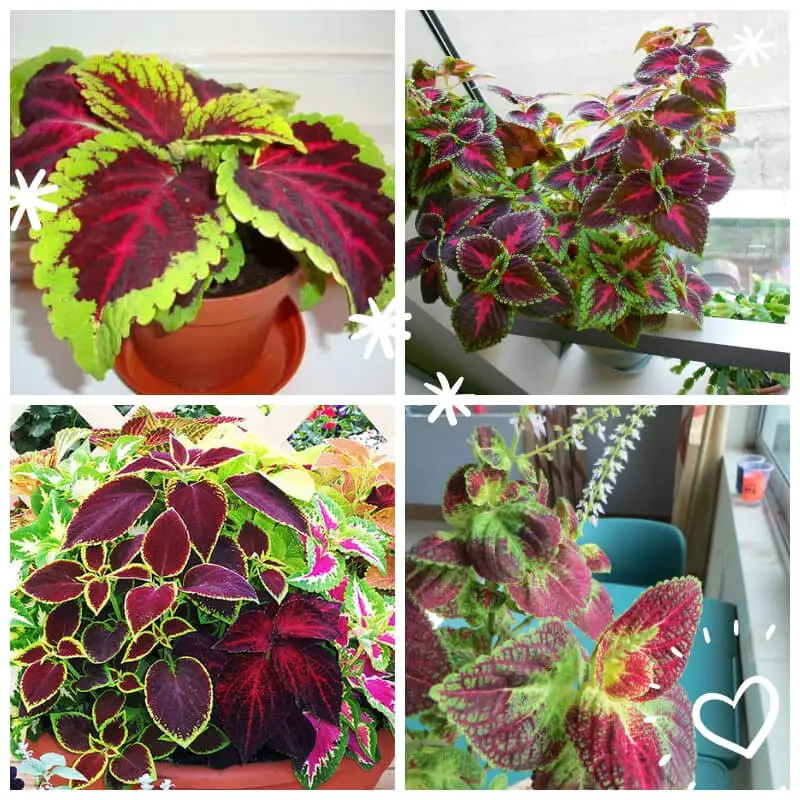
In the world of indoor gardening, Coleus is a popular choice due to its vibrant foliage that complements most containers. This tender perennial thrives in shade, where its leaves are enhanced by the reduced sunlight. With its durability and ease of growth, it’s no wonder why many gardeners opt for this colorful plant. When grown as a house plant, Coleus can be kept in a perpetual state of beauty by pinching back new growth and removing flower spikes as they develop.
This process allows the plant to maintain its striking colors and unique foliage forms. Whether you’re looking for a small bedding plant or a larger specimen-sized hanging plant, most nurseries will have Coleus available in various sizes. Many gardeners prefer to purchase full-grown plants for their instant impact, but seedlings can also be coaxed into becoming beautiful specimens with proper care and patience.
Light intensity plays a crucial role in the coloration of Coleus leaves, with most varieties producing their best colors in light shade. However, some smaller varieties can thrive in bright lighting conditions. To bring out the plant’s true potential, consider using fluorescent grow lights or choosing a variety that excites you. Coleus is relatively low-maintenance when it comes to care.
Simply keep the soil consistently moist but not soggy, and fertilize with liquid house plant fertilizer once a month. The ideal temperature range for growth is between 74 and 85 degrees Fahrenheit. As with any plant, be on the lookout for common pests like mealy bugs, aphids, slugs, snails, and whitefly. Coleus adds a pop of color to any indoor space, making it an excellent addition to your house garden.
With its ease of growth and care, consider incorporating this stunning plant into your next design.
Forced Bulbs plants
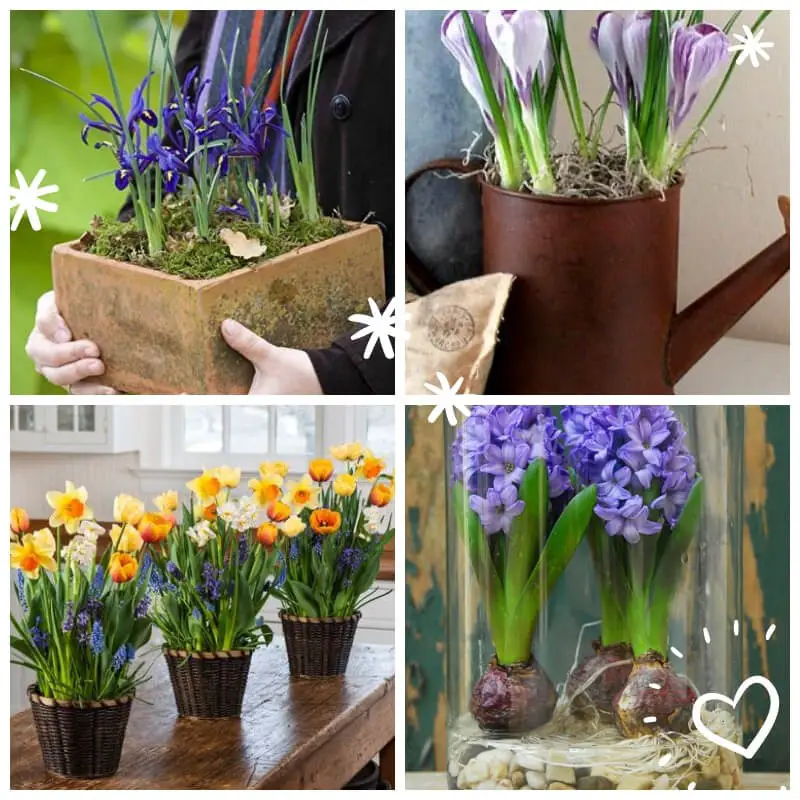
Bulbs offer a simple and effective way to bring the magic of spring flowers into your home, even during the cold winter months. Forcing bulbs allows you to control the growing conditions and coax them into blooming earlier than normal. This technique is particularly successful with spring flowering bulbs like paperwhites, which can thrive in water alone. A shallow, see-through container is ideal for forcing these bulbs, as it makes it easy to monitor the water level and root growth.
It’s essential to keep the water level just below the bulb to prevent rotting or drying out of the roots. Adding pebbles to the container helps hold the growing plants in place, while a small amount of charcoal keeps the water clean. Simply plant the bulbs, place them in a sunny spot, and they’ll bloom in three to five weeks. For those who prefer a more convenient option, stores often sell specially packaged bulbs that come with their own pot, soil, and instructions.
These tropical plants require no cooling period and can be planted directly into their pots with potting soil. Remember to leave the top third of the bulb above the soil line when planting. Initially, water the bulbs lightly, and then increase the moisture level once the flower stalk reaches about 1 foot in height. Keep the bulbs in bright light at a temperature range of 69-76 degrees Fahrenheit until you see the flowers begin to color.
During the flowering period, move them to a cooler spot to prolong the life of the blooms. While paperwhites are easy to force, other varieties like hyacinths require a cooling period of 12-14 weeks before planting. This means it’s too late for Christmas forcing, but you can start preparing bulbs for next year’s blooming by planting them in July-August-September.
Begonia
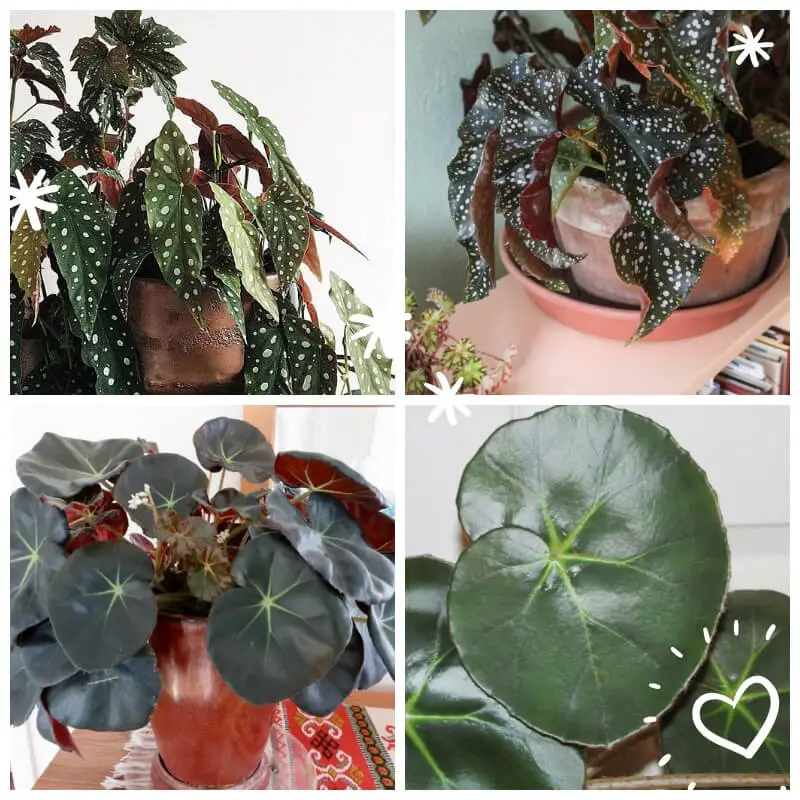
Begonia plants are a favorite among many gardeners, offering a wide range of varieties to suit different tastes and preferences. These versatile plants thrive in flower beds, containers, and hanging baskets alike, thanks to their showy flowers and attractive leaves. With proper care, Begonias make excellent indoor houseplants, as they tolerate shade well. There are three main types of Begonias: Semperflorens, Tuberous, and Perennials.
The most popular type is the Semperfloren, which includes wax, fibrous, and everblooming varieties. Depending on the type, you can find white, red, yellow, or pink Begonias, all of which produce compact, dense foliage that grows to be at least 6-9 inches tall. Begonia plants are typically propagated through seed or cuttings. While seeds are tiny and take around two to three weeks to germinate, most people prefer to buy seedlings instead.
As annuals, Begonias don’t tolerate frost well in the spring or fall. They do best in rich, loose, and fertile soil that drains well, with consistent watering and a period of drying between each session. With proper care, Begonias react positively, responding to attention by producing plusher foliage and more blooms. Regularly remove dead flowers, leaves, and stems, and trim long stems to maintain their compact shape.
A monthly application of general-purpose fertilizer using liquid fertilizers yields the best results. In terms of health, Begonias are generally pest-free plants. However, it’s essential to keep them away from frost, as exposure to cold can be fatal. If the plants appear crowded, repotting is an easy solution that involves using rich potting soil. For indoor care, place them near a sunny window but gradually reduce the sunlight until they adjust to your home’s temperature and conditions.
When first introducing Begonias indoors, you may notice significant leaf drop as they acclimate to lower light levels and dry conditions. However, within a week or two, they will settle in nicely and brighten up your home all winter.
Bonsai
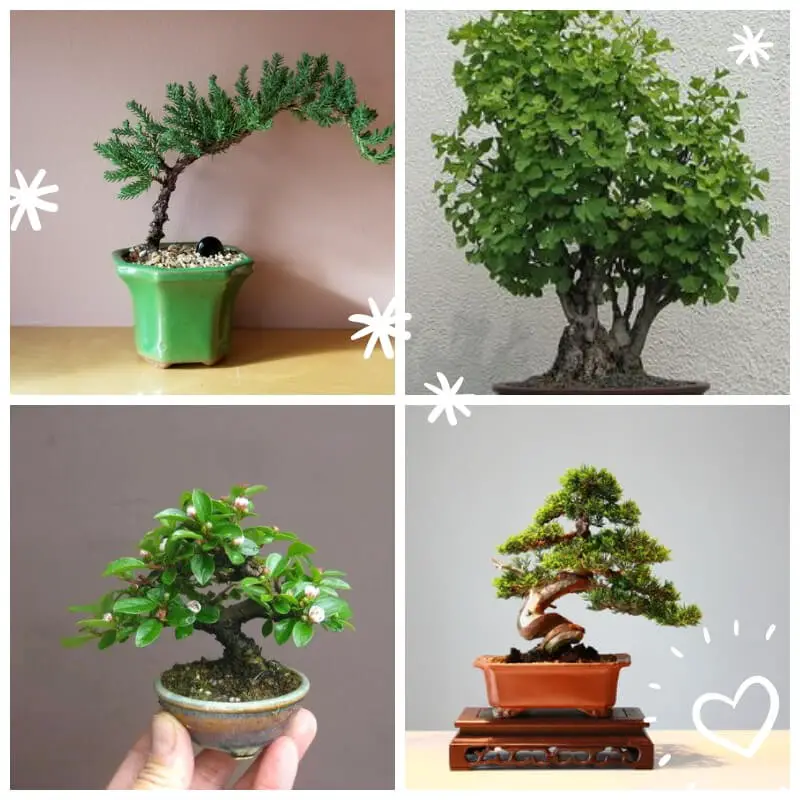
Bonsai cultivation has captivated many with its unique blend of artistry and horticulture. These miniature marvels can evoke a strong sense of curiosity in those who behold them, prompting a flurry of questions and even a desire to learn more about the intricacies of growing such plants. The term ‘bonsai’ literally translates to ‘tray planted’, which is fitting given that these plants thrive in shallow containers or trays.
In fact, selecting the perfect container can be an integral part of the artistic process. While some enthusiasts may find the actual growing process enjoyable, many more derive their sense of fulfillment from the pruning, trimming, and shaping of the plant into a stunning work of art. A common misconception is that bonsai originated in Japan, when in reality, it has its roots in ancient China.
The practice was later adopted by Japanese cultures over 1,000 years ago, becoming an integral part of their horticultural heritage. In recent decades, bonsai cultivation has experienced a surge in popularity within U. S. households, offering enthusiasts the chance to combine the joys of indoor gardening with the artistic rewards of shaping a miniature plant into a masterpiece.
While some may choose to take on the challenge of growing a bonsai from seedlings, roots, or cuttings, many prefer to start with established plants that have already been grown and shaped. Maintenance is relatively minimal and easy to follow, requiring only the same level of care as other houseplants – including sufficient sunlight, protection from insects and disease, water, and infrequent fertilization.
Bonsai cultivation can be a labor of love for those who put great effort into creating and maintaining their plants’ desired shape. A high-quality bonsai scissors is essential, but so too are the time, patience, and resources required to care for these pampered plants.
Geraniums
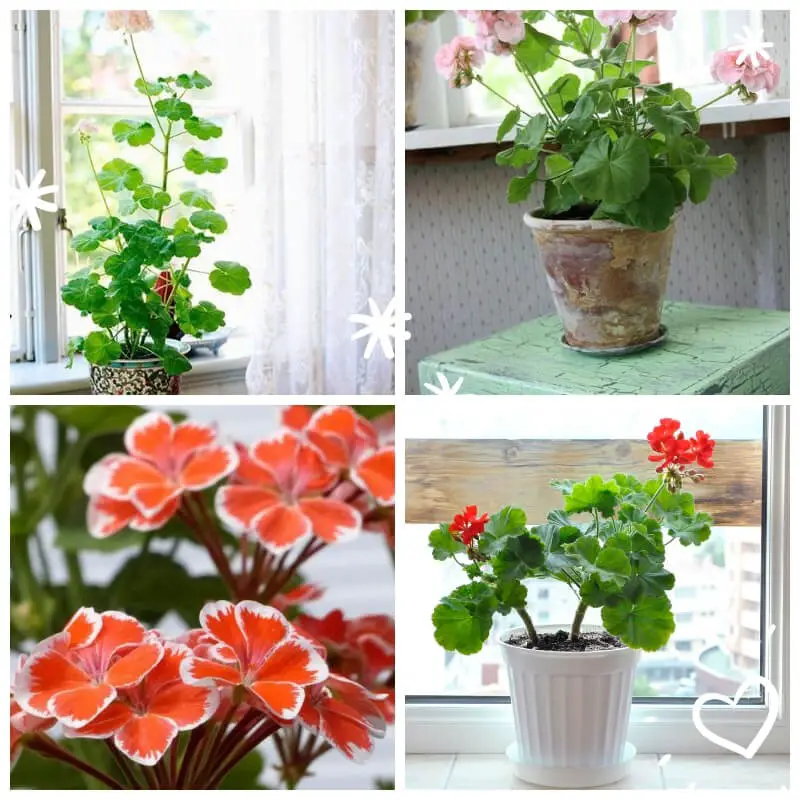
Geraniums are a versatile and low-maintenance addition to any garden. Their adaptability makes them an ideal choice for container gardens, flowerbeds, and even home gardens. With a hardiness that allows them to withstand light frosts, these plants thrive in temperatures around 70 degrees and bask in full sun or partial shade. Growing Geraniums from seeds or cuttings is possible, but many gardeners prefer to purchase small, affordable plants from nurseries and replant them accordingly.
To ensure optimal growth and plant health, adding compost and fertilizer can make a significant difference. One of the key benefits of Geraniums is their vibrant blooms, which come in shades of white, red, and pink. By pinching or cutting off dead flowers, gardeners can promote continuous blooming. On average, most Geranium plants have a lifespan of around 18 months, making them a delightful and rewarding addition to any garden.
Poinsettia
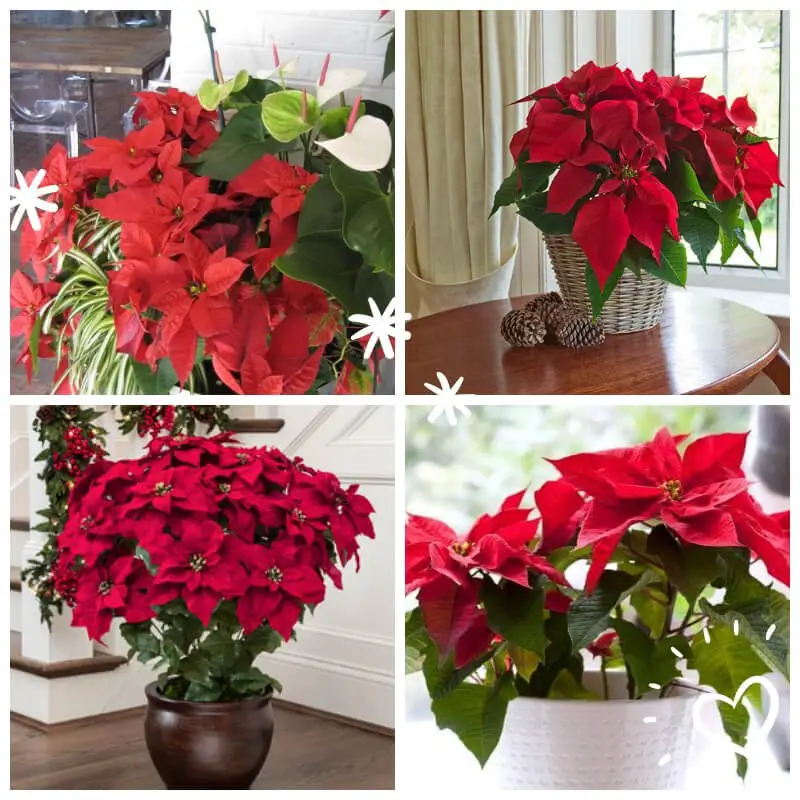
Poinsettia plants boast a unique combination of dark green leaves and vibrant flowers. When selecting a poinsettia, ensure that the leaves or flowers are not dry or brown around the edges, as this can indicate a lackluster plant. Opt for blooms that are fully open, as they may take time to unfurl. Once in bloom, the flowers can last for several weeks.
To safeguard your new purchase during cold weather, thoroughly wrap it before transporting it from the store to the car, as brief exposure to chill and wind can cause damage. While poinsettias can be propagated through seeds, this method is challenging due to their scarcity. Instead, these plants will retain their blooms for an extended period after the holiday season has passed, potentially lasting until Valentine’s Day or beyond.
To keep your poinsettia thriving, place it in a sunny room with an ideal temperature range of 63-73 degrees Fahrenheit. Avoid exposing it to drafts or high heat sources like furnace vents or fireplaces. Poinsettias are surprisingly resilient and forgiving when it comes to watering. Thoroughly water the soil, then allow it to dry slightly between waterings. If the plant begins to dry out, simply increase the moisture, and it will recover quickly.
To maintain its shape and promote healthy growth, prune your poinsettia regularly to achieve a rounded silhouette. It’s essential to note that poinsettias cannot survive frost and typically grow up to 10 feet tall in ideal tropical climates. Some may claim that certain tricks are necessary to coax blooming from these plants, but I firmly believe that proper care is the key to natural blooming.
Rubber Plants
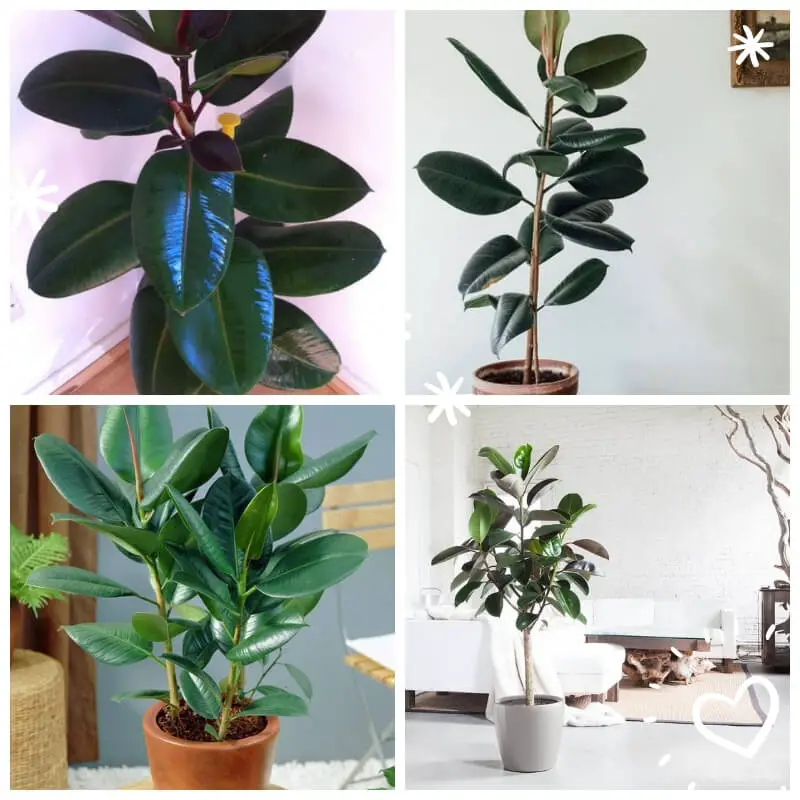
The Rubber Plant: A Low-Maintenance, Space-Occupying Houseplant OptionAre you looking for a house plant that can grow tall and make a statement in your home? The Rubber Plant is an excellent choice. With its ability to thrive in a variety of environments, this plant can provide years of indoor greenery if properly cared for.
One of the most striking features of the Rubber Plant is its deep green and glossy foliage, which can remain shiny and healthy with occasional cleaning using a soapy sponge and plain water. When it comes to temperature, Rubber Plants prefer warm conditions but are surprisingly adaptable. They can tolerate a wide range of temperatures, from 81°F during the day to 67°F at night.
However, it’s essential to avoid overwatering, as this can weaken the plant and make it more susceptible to pests, disease, and rot. To prevent these issues, use a well-draining container and good-quality soil. It’s also important to be prepared to transplant your Rubber Plant into a larger container as its roots grow quickly. If your plant becomes top-heavy, consider using stakes or trimming it in the spring. Fertilize your Rubber Plant with an organic fertilizer once a month.
Avoid chemical-based fertilizers, which can have negative effects on indoor air quality and human health. Instead, opt for natural products that promote healthy growth. While Rubber Plants are generally resistant to pests and diseases, overwatering can cause yellowing leaves. In this case, simply reduce the amount of water you’re giving your plant. More sunlight is often a good cure for leaf loss.
Occasionally, mealy bugs may appear; in this case, use a mixture of castle soap and water to gently wash them away. When selecting a Rubber Plant from your local nursery, remember that they all share similar growing patterns and maintenance requirements. With proper care, you’ll soon be enjoying lush, greenery that will impress your friends.
Spider Plant
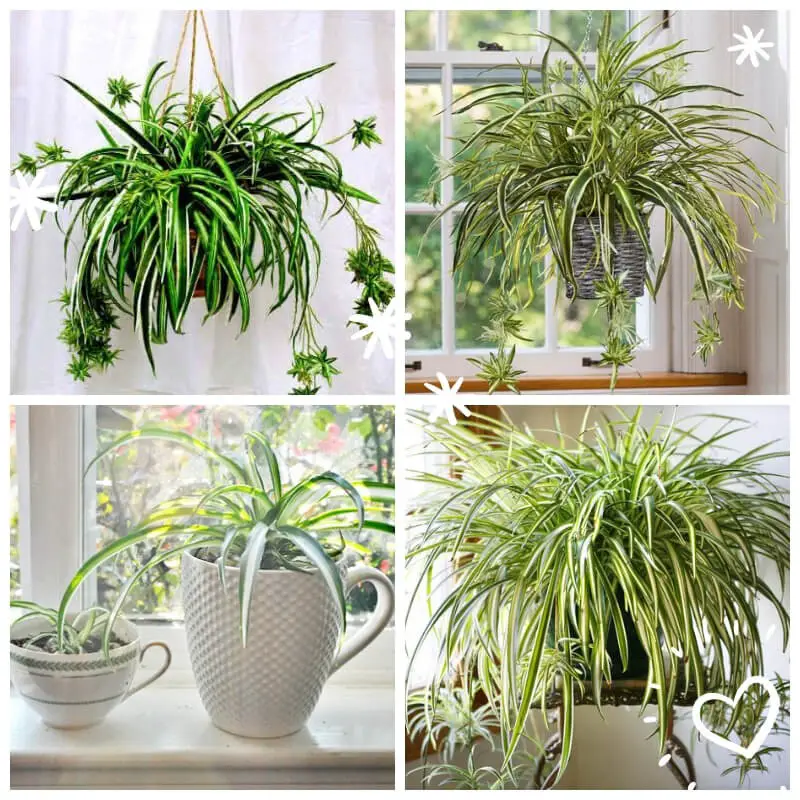
The versatile and low-maintenance spider plant is a popular choice for many gardeners, particularly those new to houseplants. With its ability to thrive in a variety of conditions, it’s no wonder why. In ideal circumstances, the spider plant will produce tight rosettes of arching leaves, accompanied by long stems adorned with baby plants, giving them a bushy appearance reminiscent of a green mane.
While there are pure green varieties available, the most common and striking is the variegated version featuring green-and-white stripes.
As an added bonus, mature spider plants produce small white flowers. One key to their success is providing bright light, which can range from semi-shade to direct sun. During the summer months, ensure consistent watering and consider applying liquid fertilizer weekly or using pellets at the beginning of the growing season.
In the winter, cut back on watering.
When it comes to propagation, spider plants are incredibly easy to work with. Wait until young plantlets have developed roots before removing them from their mother plant. Alternatively, you can divide mature plants during re-potting or take advantage of the natural shoots that produce baby spider plants. Simply tie these stalks to a stake, and as the tiny plants grow, gently remove them and place the roots in water.
Once the roots reach an inch or two, transplant the young spider plants into a well-draining potting soil.
Caring for your spider plant is a breeze. They prefer rich, well-draining soil that drains quickly to prevent root rot. To keep them happy, provide a sunny window spot one or twice a week and avoid over-fertilizing or watering. If the leaves begin to turn brown due to over-fertilization or waterlogging, prune them off, and your plant will regrow new leaves.
/nNow is the perfect time to add some spider plants to your indoor greenery collection.
Guide to Philodendrons
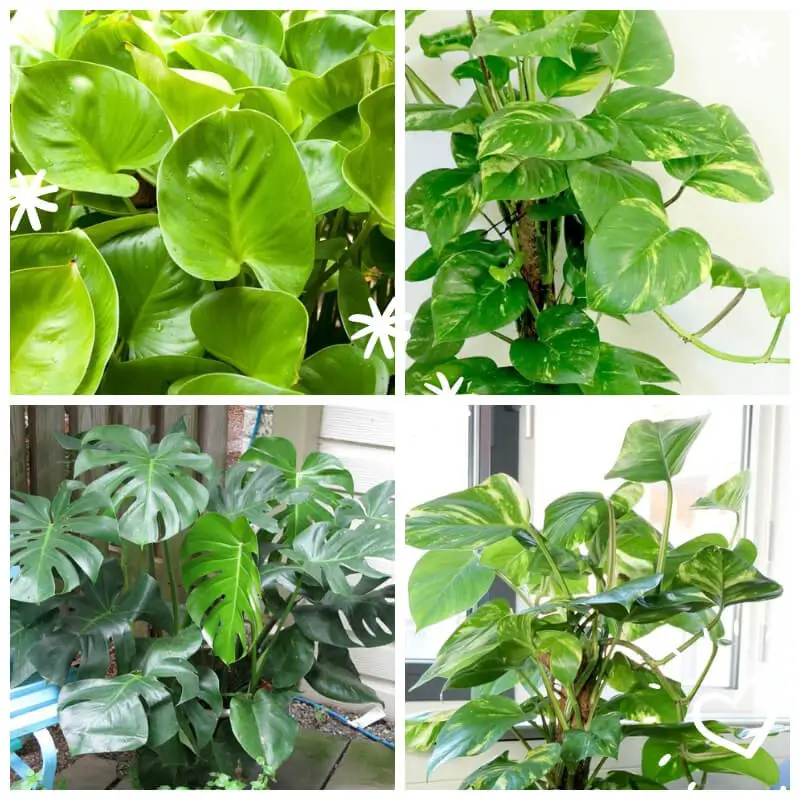
Philodendrons have been a staple in indoor gardens since Victorian times, and it’s easy to see why. Originating from the tropical forest, these plants are incredibly low-maintenance and can thrive in a variety of conditions. The two main types of philodendrons are climbers and non-climbers, each offering unique characteristics that make them suitable for any indoor space.
With their stunning foliage ranging in size and shade, philodendrons require very little light to survive, making them perfect for rooms with limited natural light. They can be cultivated in pots or hanging baskets, adding a touch of tropical elegance to any room. One of the most exciting aspects of growing philodendrons is the ability to propagate new plants by snipping off and rooting runners or sections of vines.
When choosing a vine, look for ones displaying three to four tiny root nodes – this will ensure successful propagation. Plant the rooted vines in a glass filled with water, keeping the soil moist until the roots grow at least an inch long. Once established, you can transplant the new plant into a container or pot. Philodendrons are also surprisingly easy to care for. They prefer well-draining, rich potting soil and regular organic liquid fertilization will promote healthy growth.
Keep the plants in low-light conditions, and they’ll reward you with thick, lush foliage. To keep your philodendron’s leaves looking their best, give them a gentle cleaning every two weeks using a damp sponge or cloth to remove visible dust buildup. And don’t worry if you notice the plant starts to whittle away from frost – it’s just a natural response. As for disease, philodendrons are generally resistant, but occasional infestations by mealy bugs and tiny insects may occur.
To eliminate these pests quickly and organically, use insecticidal soap applied with a cloth directly on the leaves.
Impatiens
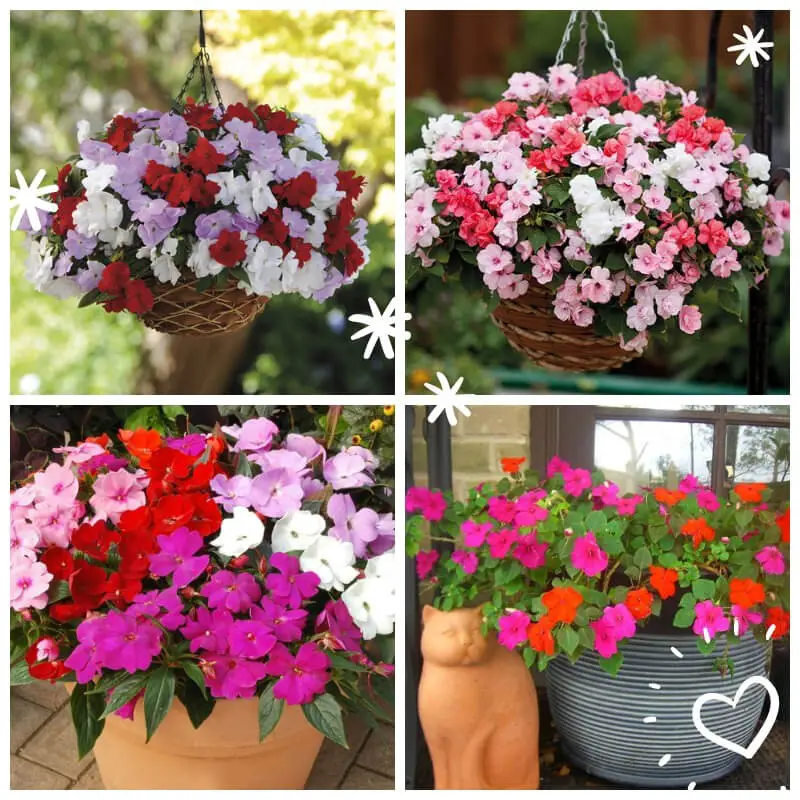
Impatiens are a staple of many indoor gardens, and it’s easy to see why. These colorful annuals produce vibrant blooms in shades of pink, red, white, rose, and mauve, adding a pop of color to any room. What’s more, they’re incredibly low-maintenance, requiring only occasional watering and limited sunlight to thrive. In fact, direct sunlight can even be detrimental to their health, so it’s best to place them in a shaded area or filtered light.
When choosing impatiens for your indoor garden, look for bushy plants with lush green leaves. These will provide the most impressive display of color and foliage. And don’t worry if you notice a few imperfections – these plants are generally free from pests and diseases, making them a great choice for busy or new gardeners.
To keep your impatiens happy and healthy, be sure to water them regularly, but avoid overwatering.
The soil should never dry out completely, as this can lead to root rot and other issues. You’ll also want to fertilize them periodically with a liquid organic fertilizer to encourage strong growth and blooming.
As with any plant, there are a few things to watch out for when growing impatiens indoors. Keep an eye out for occasional bugs or insects, and treat any infestations promptly with organic products.
With proper care and attention, your impatiens should thrive and provide years of colorful beauty in your indoor garden.
Parlor Palm
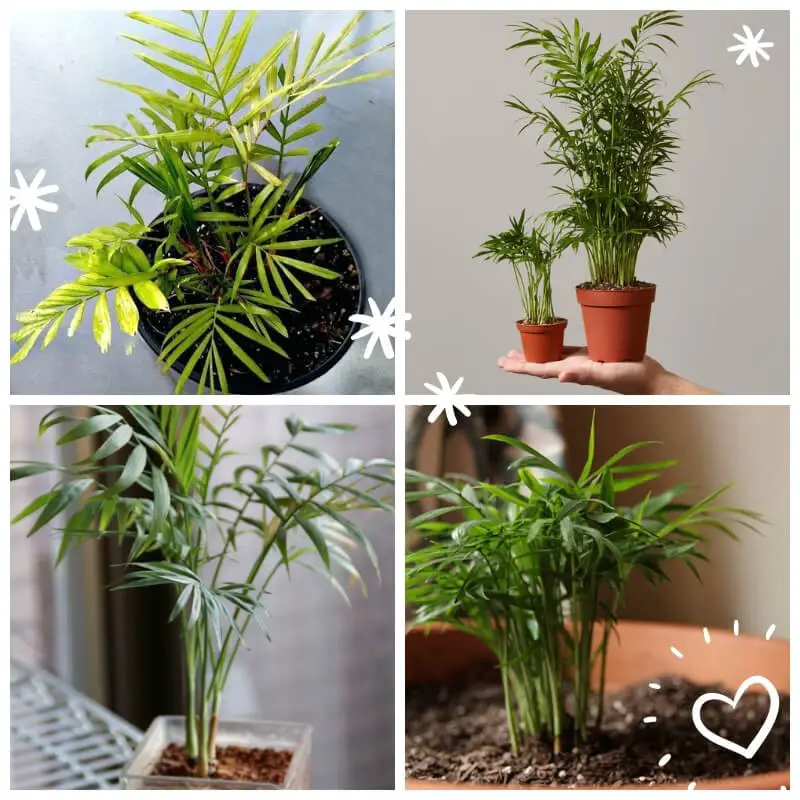
The Parlor Palm, scientifically known as Chamaedora elegans, is a popular choice among indoor plants. Its unique ability to bloom indoors makes it a standout among other palms. What’s more, its slow growth rate means that small seedlings can remain in their initial pot for years without outgrowing it. In ideal conditions, the Parlor Palm grows up to three feet tall, but it’s not uncommon to find plants that are decades old and still only reach this height.
This slow growth rate also means that the plant doesn’t require frequent pruning or repotting. The Parlor Palm is surprisingly adaptable when it comes to lighting. While it prefers filtered light, direct sunlight isn’t necessary for its survival. In fact, it can thrive in shady areas, making it an excellent choice for both home and office settings. When caring for your Parlor Palm, be sure to provide consistent moisture by keeping the potting mix consistently moist but not waterlogged.
You should also avoid using excessive fertilizer, as this can lead to white crust buildup on the pot or soil surface. In addition to proper watering and fertilization, it’s essential to monitor your plant for signs of pest infestations, such as mealy bugs and spider mites. Regularly inspecting your plant during watering sessions will allow you to catch any issues early on. One final consideration when purchasing a Parlor Palm is its size at the time of purchase.
Since these plants grow extremely slowly, it’s best to buy one that’s already reached the desired size rather than hoping for it to grow into it over time.
Related Posts
Indoor gardening can be a wonderful way to bring some life and greenery into your home. To ensure that your flowering houseplants thrive, consider these top 4 indoor gardening care tips: first, choose the right plants for your space and lifestyle; next, provide sufficient light and maintain a consistent watering schedule; thirdly, prune and fertilize as needed to promote healthy growth; and finally, be mindful of temperature fluctuations and humidity levels.
By following these simple steps, you’ll be well on your way to creating a beautiful and thriving indoor herb garden.


